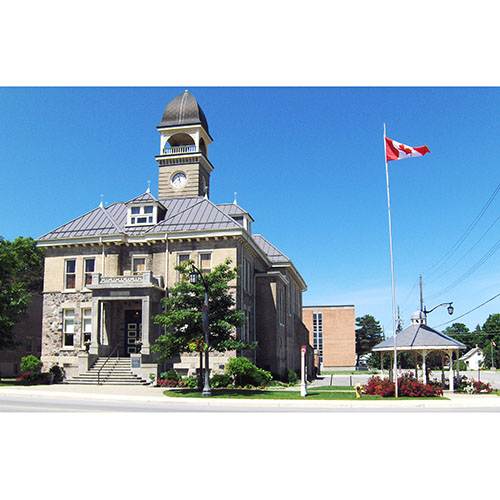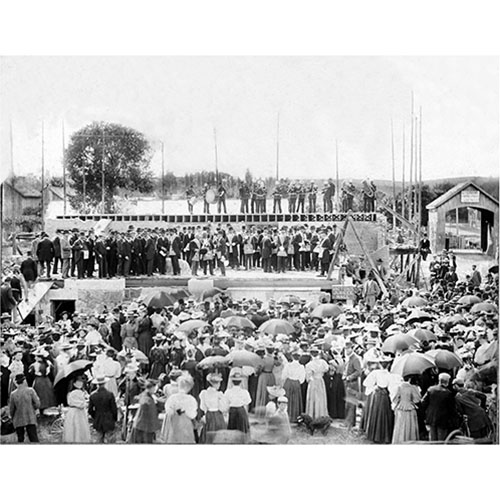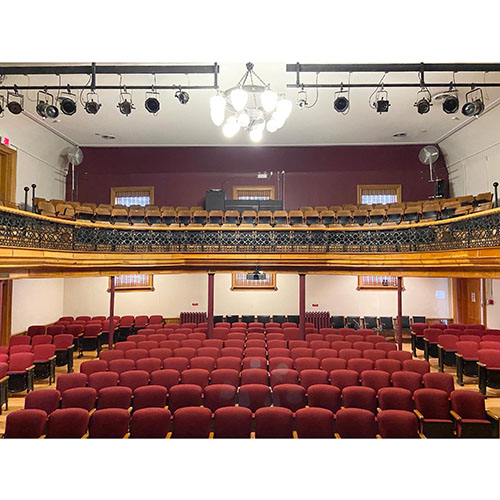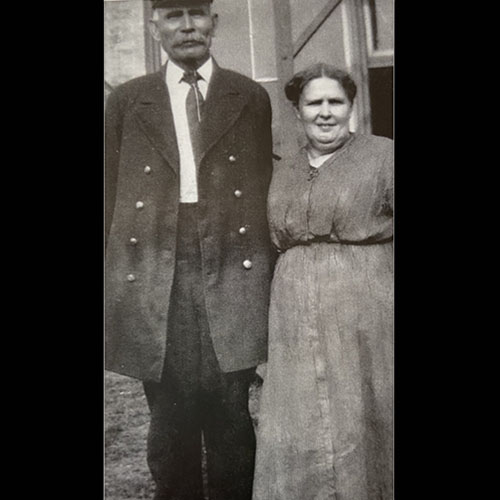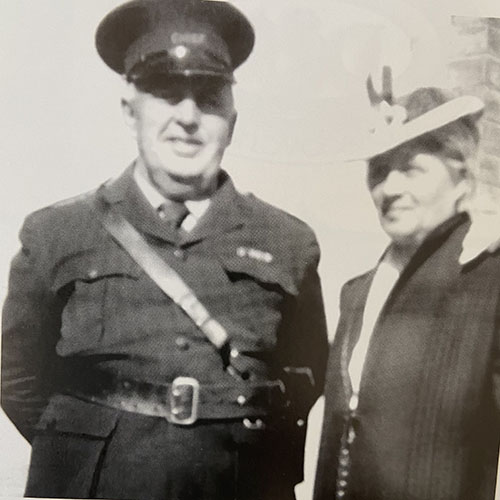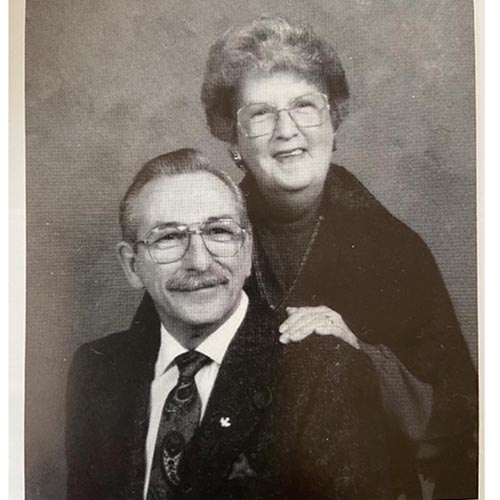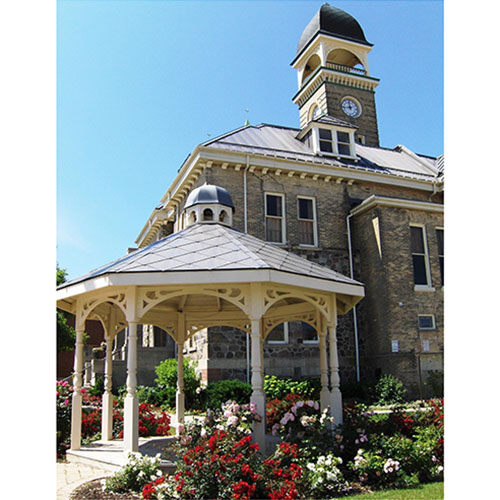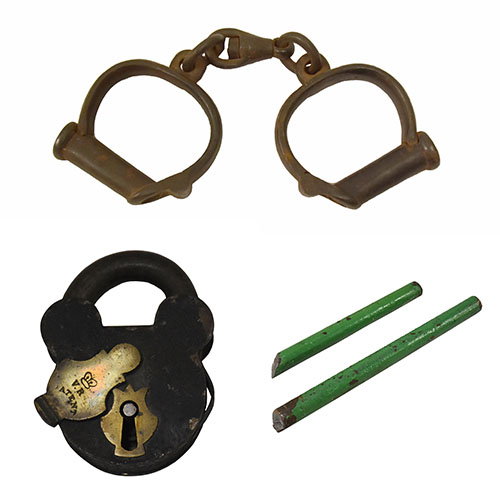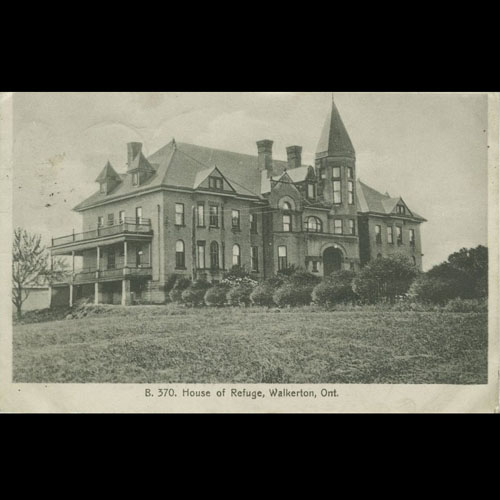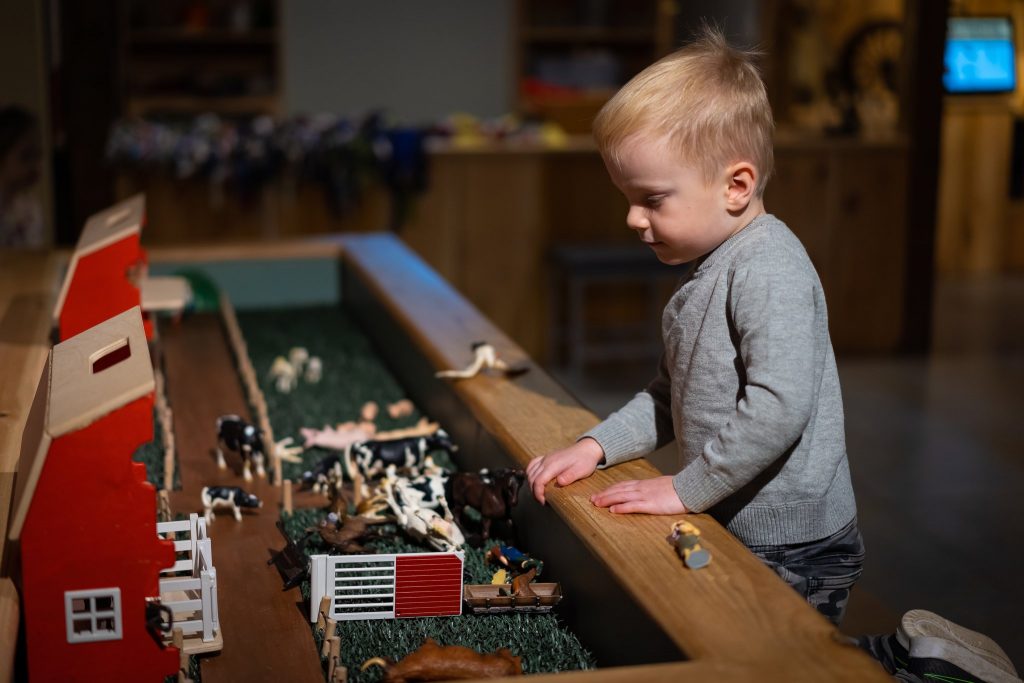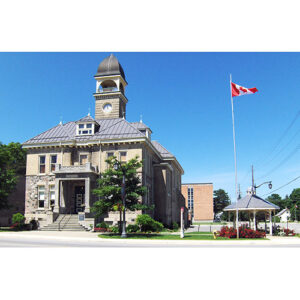 Walkerton’s Victoria Jubilee Hall has served as a gathering place for 125 years. It’s where people come to hear local stories, politicians, lectures, performances, and live music. In hard times, it’s where the community comes together to comfort, console, and find a path forward. It’s been a farmers’ market, a fire hall, council chambers, police station and wedding venue. For many of us, it’s always been there standing tall and beautiful, forever as a place where — no matter what happens out there — you will always be welcomed home.
Walkerton’s Victoria Jubilee Hall has served as a gathering place for 125 years. It’s where people come to hear local stories, politicians, lectures, performances, and live music. In hard times, it’s where the community comes together to comfort, console, and find a path forward. It’s been a farmers’ market, a fire hall, council chambers, police station and wedding venue. For many of us, it’s always been there standing tall and beautiful, forever as a place where — no matter what happens out there — you will always be welcomed home.
Today, the bell still tolls out across the town as a reminder of days gone by and of the work that is yet to come. This is thanks to the many community volunteers who know that what makes a town unique is worth keeping. They keep the lights on, take tickets and seek talent for the stage. They are part of history, doing their part to ensure there is a premier space for arts and culture in the region.
As we celebrate 125 years at the Victoria Jubilee Hall it is important to look back, to remember where we came from, so future generations may also gather to share, explore, and build community for themselves.
Laying the Cornerstone
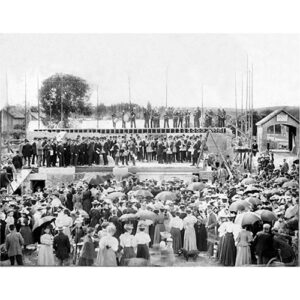 Victoria Jubilee Hall was built to commemorate the Diamond Jubilee of Queen Victoria’s reign and on the hot summer day of August 12, 1897, when the Town of Walkerton was still in its early years, politicians, dignitaries and families from across the region gathered for the ceremonial laying of the cornerstone. One report on the day notes they had hoped for larger crowds but were satisfied nonetheless with the amount of people who showed up.
Victoria Jubilee Hall was built to commemorate the Diamond Jubilee of Queen Victoria’s reign and on the hot summer day of August 12, 1897, when the Town of Walkerton was still in its early years, politicians, dignitaries and families from across the region gathered for the ceremonial laying of the cornerstone. One report on the day notes they had hoped for larger crowds but were satisfied nonetheless with the amount of people who showed up.
At the time, the Mayor of Walkerton was Alex Menzies who during the ceremony read the following to the crowd:
“The building which you now lay the cornerstone takes the place of one erected in the year 1872, one year after the incorporation of the town and which has served its day and generation. The needs of our town have outgrown its limited accommodation, hence the necessity for erection of this more commodious and suitable building. I can with pleasure refer you to our excellent system of waterworks, not excelled in this province, to a system of sewerage partly constructed with important extensions now being carried on, to the laying of permanent walks and the erection of this building as evidence of the substantial nature of this fair town of ours, and we hope in the near future to be able to add to these as occasion requires.”
He paused there for a moment proud and teeming with the pioneer spirit and went on to thank everyone for coming and invited them to visit local shops. “We trust that while you are with us your visit may be profitable and enjoyable,” the Mayor said.
Hidden inside the cornerstone is a slice of life back in 1897. In the cavity of the cornerstone, they placed a scroll, a vial of Canadian coins, a list of voters, the town bylaws, a history of Walkerton and copies of local and regional newspapers including the Walkerton Telescope and the Toronto Globe and all which remains safely concealed even today.
The photo seen here was taken from a rooftop across the street by photographer C.H. Arthur. At the time, the building operated as Young’s Warehouse.
Building the Hall
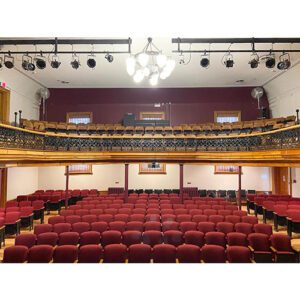 The eight-level building was designed by A.R. Denison and constructed by contractor Henry Clark who outbid the competition.
The eight-level building was designed by A.R. Denison and constructed by contractor Henry Clark who outbid the competition.
They used marl brick, clay and iconic local fieldstone you can see marking the bottom portion of the building. The marl clay was taken from an area which was gradually filled in with water, creating Marl Lakes, east of town.
One of the many that helped to build the Hall was John “Jack Black” Douglas. Douglas was a two-time Town Reeve and was also a foreman at Walkerton’s Spool & Bobbin factory. He is buried in the Douglas Hill Cemetery on Bruce Road 3 near Eden Grove alongside several other family members.
Today we know this story thanks largely to one of his descendants who donated some of the original tools used during the construction to the hall to be kept as artifacts of hall history.
Of course, one of the most distinctive features of the Hall is its bell tower and cupola. The bell itself was manufactured in 1870 in Troy, New York and raised into the bell tower in 1897 where it sits today protected by the cupola.
All of the brick and stonework, massive wooden beams and craftsmanship works as a ribcage to protect the heart: a 300-seat opera hall with world-renowned acoustics. The seating was supplied by the Valley City Chair Co. of Dundas Ontario at a cost of $1.10 per seat. At the time the seats could be moved and stored under the stage to open the floor for dances and other functions. On the balcony level, those original seats are still in use. The photo here shows the opera hall today.
The Caretakers
R.B. Ferguson
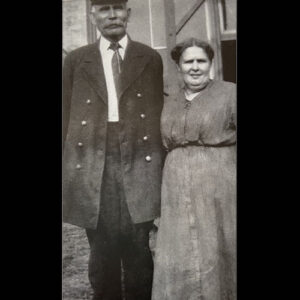 Overseeing the hall at the time was Chief R. B. Ferguson. Having taken the job of town police chief, truancy and quarantine officer and dog catcher, Ferguson moved his wife Norah and their 10 children from Wingham to Walkerton in 1904. The family served as caretakers of the hall and lived on the top floor and two rooms on the ground level. They worked to maintain the interior and exterior, including the grounds keeping.
Overseeing the hall at the time was Chief R. B. Ferguson. Having taken the job of town police chief, truancy and quarantine officer and dog catcher, Ferguson moved his wife Norah and their 10 children from Wingham to Walkerton in 1904. The family served as caretakers of the hall and lived on the top floor and two rooms on the ground level. They worked to maintain the interior and exterior, including the grounds keeping.
Chief R. B. Ferguson was a very busy man. He rang the bell morning, noon and night. In those days, the bell tolled at 7 a.m. to mark the workday, at 12 p.m. for lunch, at 6 p.m. to mark the end the day and finally at 9 p.m. to mark the curfew for children. On Sunday mornings it rang at 10:30 a.m. to remind people to get to church. In addition, the small clapper on the bell was rung insistently to summon help if there was a fire and a very long tolling if someone had drowned in the Saugeen River.
Ferguson also oversaw the nearby weigh scales. There was a nightshift officer who worked there but he knew well enough to wake Chief Ferguson to handle any emergencies in town.
John Ferguson
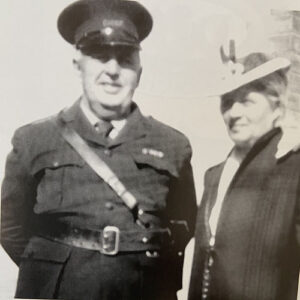 Carrying on the duties from his father before him, Chief John E. Ferguson, his wife Mabell and their five children lived at the hall from 1933 to 1956.
Carrying on the duties from his father before him, Chief John E. Ferguson, his wife Mabell and their five children lived at the hall from 1933 to 1956.
Chief John Ferguson would walk his rounds through town and if anyone wanted to speak with him the townsfolk would leave handkerchiefs or notes to let him know. Of course, in those days transportation was always a challenge; John did not have a vehicle. Nonetheless, this wouldn’t get in the way of Chief John from his duty to keep the town safe as he was so well known and so highly respected that if he needed a ride, such as to a police emergency out of town, he would just walk out and put up a thumb and get ride by a town person.
Grace Ferguson
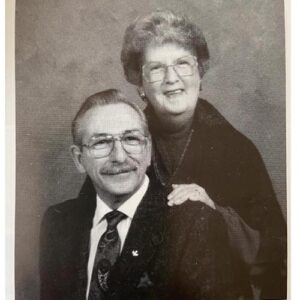 Following Chief John Ferguson to be a third-generation caretaker was his daughter Grace. Grace married Wallace Wood and lived at the hall from 1957 to 1972 with their four children. Incidentally, it was in 1972 the living quarters were converted into municipal offices.
Following Chief John Ferguson to be a third-generation caretaker was his daughter Grace. Grace married Wallace Wood and lived at the hall from 1957 to 1972 with their four children. Incidentally, it was in 1972 the living quarters were converted into municipal offices.
From an interview in 2007, Grace recalls many memorable moments living in the hall including all of the live shows and dances when she was a child. Her husband Wallace was a formidable drummer and performed at the hall with popular bands such as the Esquires, Circle 8 Ranch and Earl Heywood.
One night, when Grace was a child, she saw smoke coming from the nearby Baptist church through her bedroom window. She leaped out of bed and rang the hall bell to signal a fire. The following week there was an article in the town paper with the headline: Baptist Church Saved by Amazing Grace.
Saving the Hall
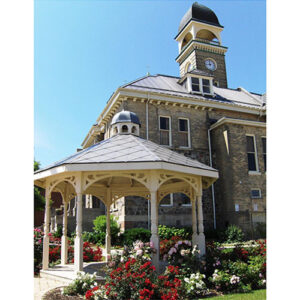 In 1997 it seemed as though the hall would be destined for demolition due to operational challenges and the high cost of repairs. Thanks to a group of community volunteers who worked hard to save and breathe new life into the historic building.
In 1997 it seemed as though the hall would be destined for demolition due to operational challenges and the high cost of repairs. Thanks to a group of community volunteers who worked hard to save and breathe new life into the historic building.
One of the linchpins of saving the hall in 1997 was to build a partnership with the Architectural Conservancy of Ontario (ACO). Today, the Victoria Jubilee Hall is held in trust for the community by the South Bruce-Grey branch of the ACO and is part of a network of similar buildings right across the province.
Under the umbrella of the ACO, the hall is run by many volunteers who work hard to keep the hall running. Their duties include: booking shows, maintenance and repairs, finances, grant applications, marketing and promotions. During performances, volunteers work as sound and light technicians, ushers, ticket takers and lift operators.
Of course, one of the most beloved parts of the hall is the gardens which would not be kept as beautiful without the dedication of a handful of green-thumbed volunteers planting, pruning and weeding.
At Victoria Jubilee Hall volunteers are recognized as the lifeblood of the building.
Without volunteers the show would not go on.
Did You Know?
- Inside the tower there are many names etched into the brickwork include the Wallace Brothers who at least twice in the hall’s history rejuvenated the walls with a fresh coat of paint.
- Back in the day weigh scales were set up next to the hall where the Bell building now sits. The scales were operated by the caretakes and used mostly to weigh coal and farm products. In the winter clear paths had to be kept as the snow would reach the tops of the hydro poles.
- The railing on the balcony bows outward to accommodate the billowing dresses of the early 1900s.
- Above the main doors there’s a beautiful stain glass window denoting 1897 the year the hall was built. Local rumour has it there’s a tiny hole in it where a local youth mistakenly shot through it with a pellet gun.
- When the hall served as the town fire hall, they used a whistle pipe to communicate orders and directions down to the floor level where the trucks were. According to Grace Ferguson Wood, they wouldn’t go from the phone in the living quarters and when a call would come in they would ring the bell to signal for the volunteer firemen living in town. When they arrived they would whistle up the pipe and they would call back down with directions to where the fire was. A portion of the pipe remains today.
- To commemorate one of the town’s homecoming events a miniature of the Victoria Jubilee Hall was built by George Allison and his wife Jean, parents of Lynne (Ken) Brown of Walkerton.
- Municipal records show that proceeds from a concert held during the Hall’s official opening were to purchase glass-covered faces for a clock in the tower. Town council at the time realized it would cost up to $20,000, millions in today’s currency, so the clock windows sat empty for 109 years. It wasn’t until 2006, thanks to the initiative of Mac and Jean Kirstine, with the assistance of Gladys Jacklin, the Walkerton Image Committee and Harkes Industries, that the clocks were finally installed in the four windows of the bell tower.
- The hall keeps an old table lamp made from the wood of Walkerton’s first town hall which the Victoria Jubilee Hall replaced.
- Famous Canadian artist David Milne sketched the Victoria Jubilee Hall prior to leaving Walkerton for an art school in New York in 1903.
The content and images of this website story are courtesy of Victoria Jubilee Hall.

